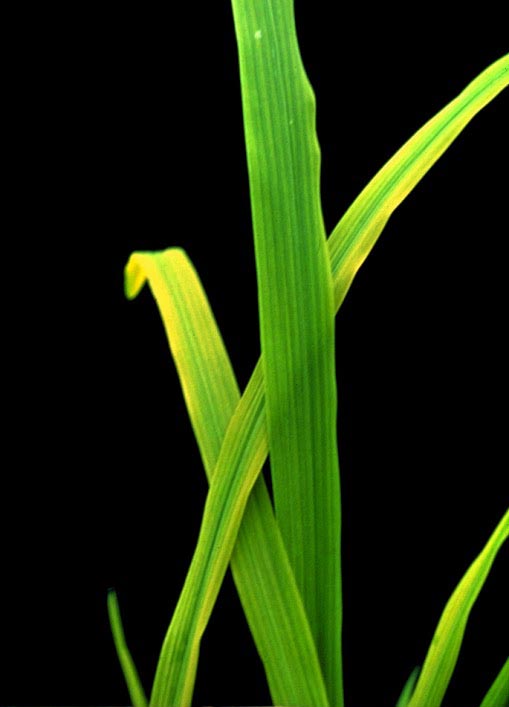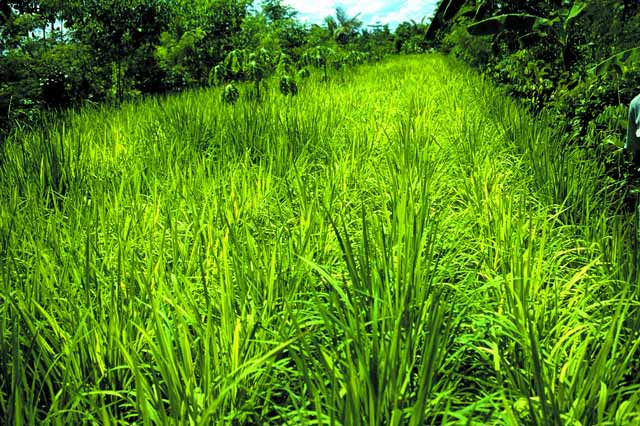Iron (Fe) deficiency
What it does
Iron (Fe) deficiency affects photosynthesis and leads to reduced yield and dry matter production.
Why and where it occurs
Fe deficiency is relatively rare, especially in irrigated rice systems.
Soils particularly prone to Fe deficiency include:
- neutral, calcareous, and alkaline upland soils
- alkaline and calcareous lowland soils with low organic matter status
- lowland soils irrigated with alkaline irrigation water
- coarse-textured soils derived from granite
How to identify

Check the plant for the following symptoms:
- interveinal yellowing and chlorosis of emerging leaves
- whole leaves become chlorotic and then very pale
- entire plant becomes chlorotic and dies if deficiency is very severe
- decreased dry matter production
To confirm Fe deficiency, send soil and plant sample to lab for Fe deficiency test.
Why is it important
Fe deficiency is relatively rare especially in irrigated rice systems, but can occur throughout the growth cycle of the plant. It can be a source of yield loss in alkaline or calcareous soils (especially in the uplands).
How to manage
- Grow Fe-efficient varieties.
Contact your local agriculture office for an up-to-date list of available varieties. - Apply organic matter (e.g., crop residues, manure).
- Apply waste materials from mining and other industrial operations provided that they do not contain other pollutants at toxic concentrations.
- Use acidifying fertilizers (e.g., ammonium sulfate instead of urea) on high-pH soils.
- Use fertilizers containing Fe as a trace element.
Reference:
Dobermann A, Fairhurst T. 2000. Rice: Nutrient disorders & nutrient management. Handbook series. Potash & Phosphate Institute (PPI), Potash & Phosphate Institute of Canada (PPIC) and International Rice Research Institute. 191 p.
Content experts: Roland Buresh (r.buresh@irri.org) and James Quilty (j.quilty@irri.org)
